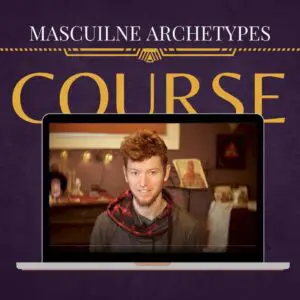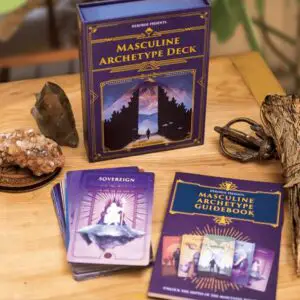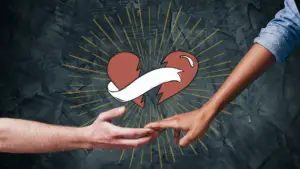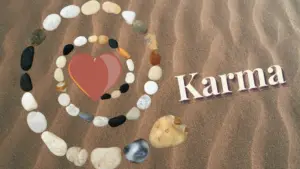The Tarot has many different archetypal symbols that it uses to convey meaning. These archetypal symbols include the suit (cups, pentacles, wands, and swords) and the elements (fire, water, air, earth).
Other Archetypes can be found in characters, the colors, and the story unfolding in the artwork.
In this article, we will be unpacking the different archetypes that can be found in the Tarot. This will give you a new depth of meaning to your reading.
Jungian Archetypes in Tarot
Carl Jung, a famous Swedish psychologist, believed that there is a wellspring of symbols shared amongst all cultures. He called this the collective unconscious.
Jung believed that these symbols come from our ancestral past, manifest in our dreams, fantasies, and thoughts.
This means that you don’t have to be familiar with Tarot in order to understand the symbolism found within it.
READ MORE: Basics of Jungian Psychology
According to Carl Jung, there are five main archetypes.
- The Self is the archetype that embodies the concept of unity and wholeness. It is the center of the psyche and represents our conscious experience.
- The Persona is the archetype that represents our public image. It is the mask we wear to get along in society, and it protects us from rejection by others.
- The Anima is the archetype for our inner feminine (within everyone). It is represented by a woman or sometimes an animal.
- The Animus represents our masculine side (within everyone); he is represented by a man or sometimes an animal.
- The Shadow is the dark side of the self, and it represents our repressed desires.
You can look at each of the Major Arcana through the lens of these Archetypes. Here is a list of the Jungian Archetypes of the identity and the associated Major Card.
| The Self | The Persona | Anima | Animus | The Shadow |
|---|---|---|---|---|
| The Fool The Chariot The Hanged One The World | Justice Temperance The Star The Magician | The High Priestess The Empress Strength | The Emperor Hierophant The Hermit | The Devil The Moon The Tower Death |
Note: Some cards are in multiple categories because there can be more than one meaning, depending on the situation.
The Self: Finding Wholeness
The self represents the sum total of all the archetypes. It is the complete person, with all the strengths and weaknesses. The goal of the self archetype is to become whole.
This can be a challenge, as the self archetype represents our nature’s light and dark aspects. It is up to us to embrace both and find the balance between them.
- The Fool is the archetype of new beginnings and is associated with the Self Archetypes because he represents the journey of self-discovery. He is the innocent who is not afraid to venture into the unknown.
- The Chariot represents moving towards the light. It is about consciously changing. It not only works with the Self Archetype but can also represent the Explorer.
- The Hanged One is about seeing things from another perspective. That is why he is often associated with the Self Archetype. He teaches us that we need to look at things from a different angle in order to see the truth. The card is also associated with the Rebel Archetype.
- The World is the end of the journey. The card represents self-realization and coming full circle to find balance and peace within.
When the self archetype dominates the cards in a reading, it generally indicates that you are on track with your personal growth.
When the self archetype is not dominant, it indicates that you need to focus on your personal growth. This can be done by focusing on the other archetypes and seeing how they are represented in your life.
The Persona: The Image You Project
The Persona is the face you show to others. It is the image you project to the world. It is your public Persona, the mask you wear in order to interact with others. The Persona can be a positive stride towards becoming your authentic self or a tool used to hide the truth of who you are.
It is an excellent way to present your best face to others when used positively.
When used negatively, the Persona can become a barrier between you and authenticity.
With the Major Arcana the Persona shows up through Justice, Temperance, The Star, and The Magician.
- Justice is the archetype that represents your choices and how other people see you. It is about how you act in the world and what kind of reputation you build for yourself.
- Temperance is the archetype representing your ability to balance your personal and public life. It is about finding the middle ground and not letting one aspect of your life dominate the other.
- The Star is the archetype that represents your dreams, ideals, and hopes. It is about what you wish to achieve in life and how other people will see you achieving those goals.
- The Magician is the archetype that represents your ability to use words and ideas in order to influence others. It is about how other people see you and the image you project.
When Tarot cards that represent the Persona dominate the reading, it is a good indication that you are focusing on projecting an image of yourself to the world and how other people see you.
It may also indicate that you are in a time of transition where your public Persona is changing.
What is the Anima and Animus?
Carl Jung thought that we all have Feminine and Masculine energy within us, which he referred to as the Anima and Animus. Jung described the Animus as the male unconscious side of a woman and the Anima as the unconscious feminine side of a guy, each existing outside of our physical bodies.
The Anima and Animus can be seen as guides in a tarot reading, representing the querent’s inner wisdom. The Anima and Animus are not only about gender differences but also about the different ways we express ourselves.
This goes deep!! Read Gender In Tarot
Our inner feminine might be compassionate, intuitive, and creative, while our inner masculine might be decisive, logical, and analytical.
When we’re in balance, we can recognize the feminine and masculine qualities in ourselves and use them to make decisions. When we’re not balanced, it’s possible to fall into stereotypes of being a man or woman.
Anima: The Inner Feminine
There are three cards in the Tarot that can be used to represent the Anima.
- The High Priestess represents the Inner Feminine. She is the keeper of secrets and a master of intuition. The High Priestess feels things on a deep level and can see into the future.
- The Empress is associated with the Anima because it’s a card of creation. There is also a connection to fertility and pregnancy, and the Empress appears as many women in tarot decks.
- Strength card is associated with the inner feminine because it represents the feminine side of courage, rather than the more aggressive male version.
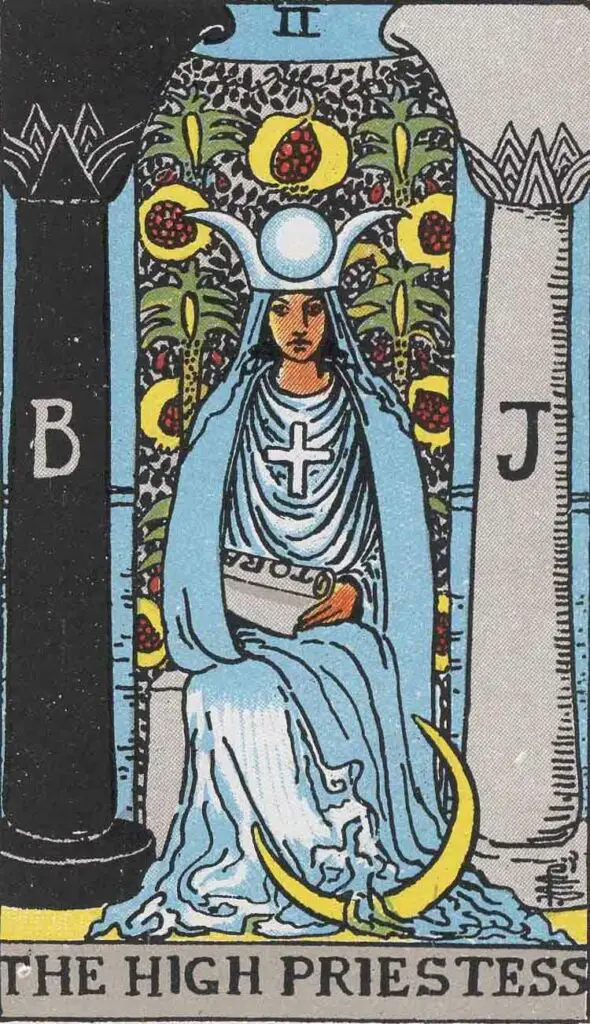
If a card that represents the Anima comes up in a reading, it’s a sign that your inner feminine is trying to speak. Are you being too logical and aggressive? Or are you letting emotions get the best of you?
Looking at the Anima archetype can help you uncover new meaning to the cards.
Animus: The Inner Masculine
The inner Masculine, or Animus, archetype shows up through three cards in the Tarot.
- The Emperor card represents the Animus and is associated with the qualities of leadership, decisiveness, and rationality. The Emperor also takes on the realm’s masculine duty of protection and order.
- The Hierophant is a card that represents tradition, and the patriarchy. The Hierophant is also associated with the Sage archetype.
- The Hermit is associated with the inner masculine because it represents his solitude and wisdom. It also speaks to the male energy within each of us.
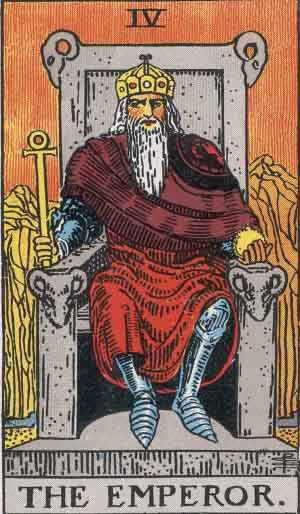
If these figures come up in a reading, it might be a sign that the querent is in need of some of these qualities. For example, if the Emperor shows up, the querent might need to be more decisive, while the Hierophant could represent a need for tradition or structure.
When a lot of Animus symbols show up, you might want to look at your personal relationships. Are you being too forceful? Or have you been neglecting the masculine side of yourself?
The Shadow: The Unconscious and Repressed Identity
The Shadow is the dark side of our personality, which we often repress and deny. It is the part of us that we are afraid to admit exists, and it can often be associated with negative qualities such as anger, jealousy, and greed.
READ MORE: Ultimate Guide to Shadow Work
However, the Shadow is also a powerful force that contains our growth potential. By acknowledging and working with the Shadow, we can learn to accept all parts of ourselves and find a greater sense of wholeness.
Here are the four cards that represent the Shadow Archetype:
- The Devil is a symbol of our own dark side. The key to working with the Shadow is to become aware of its presence and begin to accept and integrate it into our lives. This can be a difficult process, but it is an important step in personal growth and development.
- The Moon is a symbol of the Shadow because it represents our unconscious mind, which contains all the thoughts and emotions that we are not consciously aware of. When you meditate on the Moon, it can help to reveal what is hidden deep within your unconscious mind.
- The Tower is a symbol of chaos and destruction, which can often be the result of repressed anger and emotions. It represents the raw power of the Shadow, and can be a warning sign that something is out of balance in your life.
- Death is another card that represents the unconscious because it symbolizes the end of something old and the beginning of something new. It is a card that signals transformation, but it can also be a warning that we are resisting change.
When a card representing the Shadow Archetypes appears in your reading, it can signify that you need to confront your dark side. Try to take it as an opportunity to look deeper into the hidden aspects of your psyche.
Be honest with yourself, and don’t be afraid to explore the dark corners of your mind. Only by doing so can you begin to accept all parts of yourself and find a greater sense of wholeness.
The Four Suits and the Minor Arcana Archetypes
The Tarot has four suits, and each of them has an underlying archetypal meaning.
- The Suit of Cups represents the element of water and depicts our emotional landscape.
- The Suit of Wands represents the element fire and stands for our creative impulses.
- The Suit of Swords represents air and symbolizes our intellect.
- The Suit of Pentacles represents earth and shows what is tangible to us in the physical world.
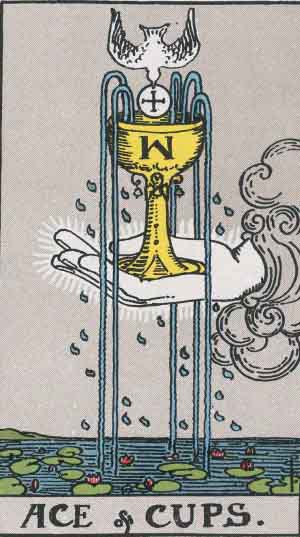
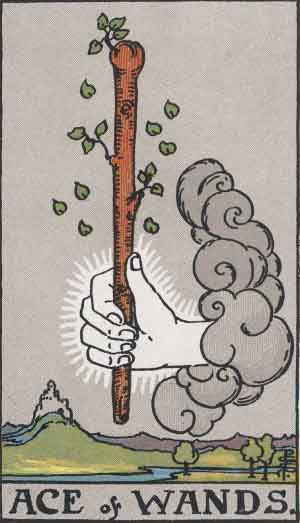
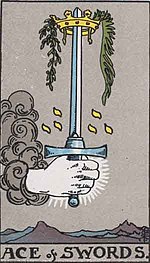
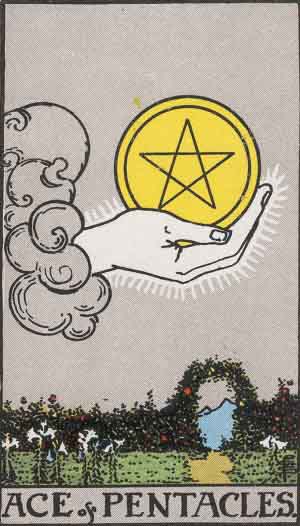
Each of these suits speaks to something elemental and primal within us. Whenever you pull a card of a certain suit, first ask yourself how the archetypes of that suit are showing up in your life.
Such as the three cups might suggest you are celebrating a happy event, and it is pointing towards the emotions of the moment.
After looking at the ambient archetype of the suit, you can look at the particular archetypes that are showing up in the artwork.
Archetypal Meaning of Color in the Tarot
Colors invoke certain primal responses within us. For instance, the color red is associated with the energy of anger, passion, or love.
When looking at a card, consider what color is predominant and try to discern the archetype that is being depicted.
For example, the Three of Cups shows three women under a tree with cups in their hands, and the predominant color here is red. So, you might be celebrating an event with friends or loved ones and feel a connection to them that is passionate or loving.
Each color holds a type of resonance.
If a character is wearing the color green, it might have one meaning, but if you swapped it to red, it might have a totally different message.
Here are colors you can look for and the associated meaning:
- Red: passion, anger, love
- Orange: enthusiasm, creativity, vitality
- Yellow: joy, optimism, cheerfulness
- Green: balance, growth potential, hope
- Blue: calmness, tranquility, peace
- Purple: luxury, royalty, creative expression
- Pink: love, innocence, or purity
- Black: mystery, shadow work, the unknown
- White: clarity, innocence, lightness
- Grey: neutrality or indecision
- Brown: practicality, stability, earthiness
- Gold: success, wealth, abundance
- Silver: intuition, insight, or inner truth.
When doing a reading, I look towards the suit first to understand the realm in which the meaning lies. Then I look at the colors used in the image to undercover more context.
After that, I look at the archetypes that I might find in the characters.
Jungian’s 12 Archetypes and Tarot
Jung also created a system of 12 archetypes. Such as the jester, the hero, the mother, and so on.
These archetypes are an integral part of Jungian psychology and can be used to describe the different aspects of our personalities.
Here is a list of the 12 Jungian archetypes:
- The Innocent
- The Sage
- The Hero
- The Caregiver
- The Explorer
- The Ruler
- The Rebel
- The Lover
- The Creator
- The Jester
- The Magician
- The Everyman
When evaluating the characters on a card, you can ask yourself if they look like one of these archetypes. That can help you unlock a new meaning to the story of the card.
A good example would be the warrior in the five of swords. The warrior stands on a war-torn battlefield.
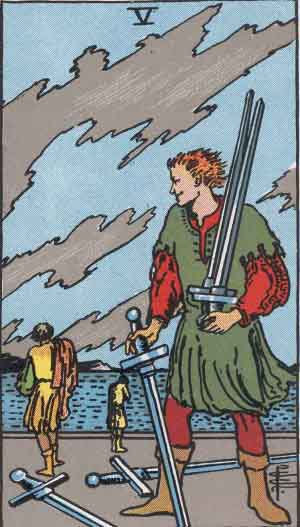
There can be another meaning though.
The character might be a scavenger that is picking at the leftover loot. If that is the case, it might be better to read it as the Rebel.
With Tarot there is no 100% this is the meaning. It’s more about exploring the concepts and getting your mind into active imagination, and that is where the wisdom surfaces from.
Another example would be the jester found in the Fool card. It can be seen as an archetype of the jester, a character that exists to entertain and amuse.
How Archetypes Work In The Tarot
Archetypes are universal forms that exist in the collective unconscious of humanity, and they influence our lives on an individual level. Archetypes can be expressed as symbols or myths that have worldwide significance; they are the common link between all cultures.
The tarot cards represent these archetypes and give us insight into how we can use them to our advantage in our lives.
Each archetype has a positive and negative aspect, and it’s important to be aware of both when working with them. For example, the Hero archetype is associated with courage and strength, but it can also be associated with arrogance and aggression.
When you’re working with the Tarot, it’s essential to be aware of which aspects of an archetype are present in a particular situation.
The archetypes can be used to help us make decisions, and they can also give us insight into our own psychological makeup. By understanding the archetypes, we can better understand ourselves and our place in the world.
This knowledge can help us make better decisions and empower us to take control of our own lives.
The archetypes can also be used to help us understand the actions of others and how they may affect us.
For example, the High Priestess represents wisdom and discernment; she’s also an expert in divination. If you’re having difficulty understanding someone’s motives, the High Priestess can help you see things from their perspective.
The Tarot is a powerful tool that can help you to find answers and guidance in your life. It’s important that you understand the archetypes so that you can use them effectively to get the most out of your readings.
In Conclusion:
Archetypes are potent symbols that show up in dreams, myths, and stories. They can also be found in our daily lives and our relationships with others.
The Tarot is a powerful tool for understanding the unconscious mind and the many symbols that show up in our lives. If you’re interested in exploring your own psyche, or if you want to explore the archetypes that influence our world, the Tarot is a great place to start.
If you are interested in learning more about Jungian Psycology and Tarot, read the following articles:
